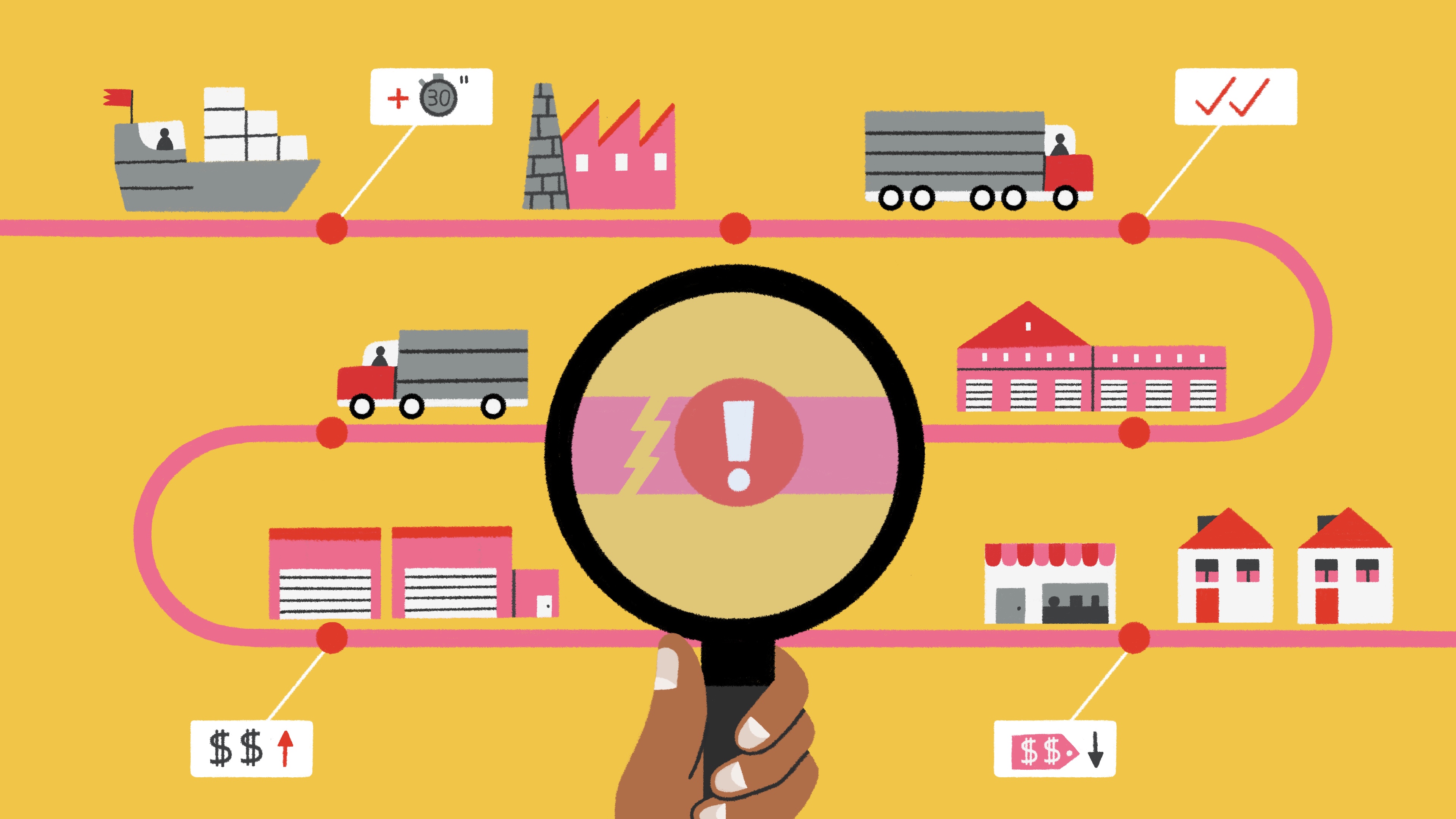The post Australia’s Adventure Tourism Market Set for Explosive Growth by 2031 appeared first on TheAussieway.
]]>With travellers seeking unique and off-the-beaten-path adventures, Australia adventure tourism has evolved beyond traditional sightseeing. From deep-sea diving in the Great Barrier Reef to skydiving over the Whitsundays, the industry offers a wide range of experiences catering to all levels of thrill-seekers. This article explores key industry trends, market segments, economic impact, and the future outlook of adventure tourism in Australia.
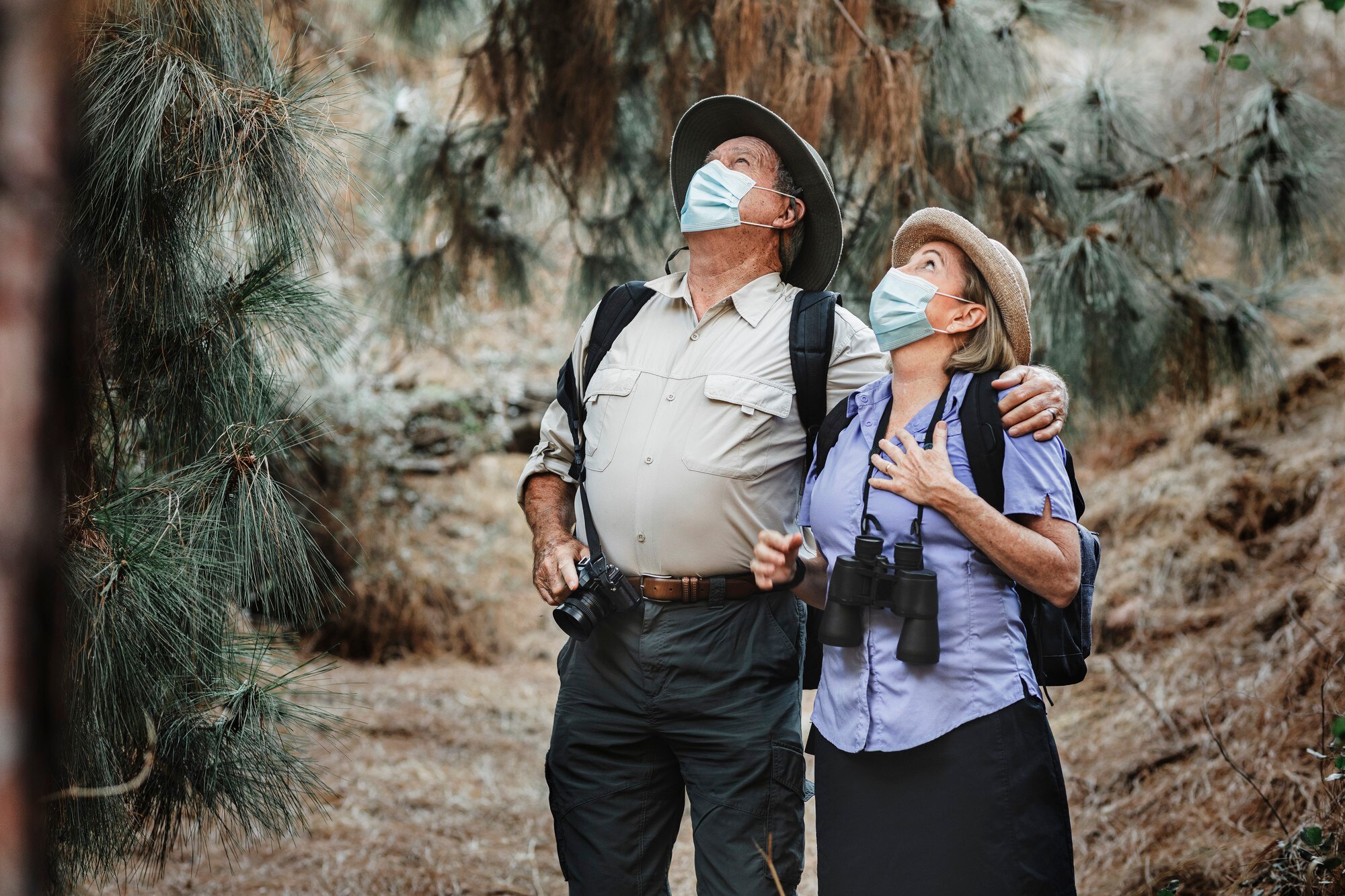
Rising Preference for Adventure and Outdoor Activities
Globally, adventure tourism has seen an unprecedented boom as travellers move away from conventional vacations in favor of action-packed and immersive outdoor experiences. Activities such as hiking, rock climbing, white-water rafting, and wildlife safaris have become increasingly popular among both domestic and international visitors.
Australia, with its stunning and diverse natural landscapes, is uniquely positioned to cater to this growing demand. The country’s vast coastline, dense rainforests, rugged outback, and mountain ranges provide countless opportunities for adventure travelers. Some of the most sought-after outdoor experiences Australia has to offer include:
- The Great Barrier Reef – One of the world’s top diving destinations, offering unforgettable scuba diving and snorkeling experiences among vibrant coral reefs.
- The Blue Mountains – A paradise for rock climbers, abseilers, and bushwalkers seeking breathtaking views and challenging terrain.
- Uluru and the Outback – A destination that combines adventure with Indigenous cultural immersion, where travelers can trek across stunning desert landscapes.
- Tasmanian Wilderness – A haven for hikers and kayakers, offering untouched natural beauty and incredible wildlife encounters.
As adventure travel trends shift towards authentic, experience-driven journeys, Australia continues to attract adventure enthusiasts looking for a perfect blend of excitement and nature.
COVID-19 and the Resurgence of Adventure Tourism
The COVID-19 pandemic had a severe impact on global tourism, with travel restrictions, lockdowns, and safety concerns putting a halt to international travel. The adventure tourism market in Australia also faced challenges, with major destinations experiencing a significant drop in visitors. However, the post-pandemic recovery has been swift, driven largely by domestic tourism.
Australians have rediscovered their own country, opting for road trips, camping, and outdoor adventures in place of overseas travel. This shift has led to a boom in demand for domestic adventure tourism, benefiting local businesses and operators. Additionally, the easing of travel restrictions has once again opened Australia’s borders to international tourists eager to experience the country’s natural wonders.
Some key post-pandemic trends shaping the Australian tourism industry growth include:
- Increased Interest in Nature-Based Travel – Tourists are prioritizing outdoor and adventure experiences over crowded urban destinations.
- Small-Group and Private Tours – To maintain social distancing and personalized experiences, travelers prefer smaller, more exclusive adventure tours.
- Self-Guided Adventures – Activities such as camping, hiking, and road trips have surged as travelers seek flexible and independent itineraries.
- Sustainable and Eco-Conscious Travel – Travelers are becoming more mindful of their environmental impact, leading to a rise in demand for sustainable and ethical adventure tourism.
The Role of Eco-Tourism in Adventure Travel
As environmental awareness grows, eco-tourism in Australia has become a fundamental part of the adventure tourism industry. More travelers are actively seeking sustainable travel experiences that promote conservation and respect for local ecosystems.
Australia is home to a wealth of eco-friendly adventure destinations, such as:
- Daintree Rainforest, Queensland – One of the world’s oldest rainforests, offering guided eco-tours that educate visitors on biodiversity and Indigenous culture.
- Kangaroo Island, South Australia – A haven for nature lovers, featuring wildlife sanctuaries, conservation parks, and sustainable eco-lodges.
- Rottnest Island, Western Australia – A car-free island that encourages cycling, snorkeling, and wildlife encounters, all within a protected environment.
Many adventure tour operators are adopting eco-friendly practices, including carbon-neutral travel options, sustainable accommodations, and ethical wildlife tourism. The focus on conservation and responsible tourism ensures that Australia remains a top destination for adventure travelers while preserving its natural beauty for future generations.
Market Segmentation and Demand for Activities
Domestic Tourism
Domestic adventure tourism has witnessed a substantial uptick, with Australians increasingly embracing thrilling outdoor activities. This growing trend has been driven by a combination of factors, including an increased focus on active lifestyles, improved accessibility to adventure destinations, and the influence of social media showcasing Australia’s stunning landscapes. Popular destinations for adventure tourism include:
- Blue Mountains: A prime location for rock climbing, abseiling, and canyoning. With dramatic sandstone cliffs and deep gorges, the region offers a world-class adventure experience that continues to attract climbing enthusiasts.
- Gold Coast: Famous for its surf-friendly beaches, the Gold Coast is a haven for surfers of all levels. The combination of warm waters, consistent waves, and a vibrant coastal culture makes it a top pick for domestic tourists.
- Kimberley Region: This remote wilderness offers an authentic outback experience, with 4WD expeditions, river cruises, and cultural experiences led by Indigenous guides. The demand for these immersive experiences has grown as travelers seek more meaningful connections with the land.
In addition to these iconic locations, road trips, 4WD expeditions, and camping experiences have surged in popularity. Families, solo travelers, and groups are increasingly opting for self-drive adventures, which allow for flexibility and deeper exploration of Australia’s diverse landscapes. According to Australian travel statistics, domestic travel numbers have steadily increased post-pandemic, reflecting a strong desire for local exploration.
International Tourism
Australia remains a premier destination for international travellers seeking adventure, with its unique blend of coastal, desert, and rainforest environments. Visitors from major markets, including the US, UK, Germany, Japan, and China, continue to be drawn to the country’s unparalleled outdoor offerings. Some of the most sought-after adventure destinations include:
- Great Ocean Road: This iconic coastal route offers breathtaking scenery and adrenaline-fueled activities such as surfing, hiking, and skydiving over the Twelve Apostles.
- Kakadu National Park: A UNESCO World Heritage-listed site, Kakadu offers an extraordinary mix of adventure and cultural heritage. Activities such as crocodile spotting, billabong cruises, and rock art exploration make it a must-visit for thrill-seekers and history enthusiasts alike.
- Fraser Island: The world’s largest sand island presents a range of adventure opportunities, from 4WD beach drives and camping to snorkeling in pristine freshwater lakes.
With the global adventure travel market projected to expand significantly, adventure travel in 2031 is expected to see increased international participation in Australia’s adventure tourism sector. Growth in this area is likely to be driven by factors such as enhanced connectivity, targeted marketing campaigns, and innovations in sustainable tourism practices.
Niche Sectors
The rise of eco-conscious travel has led to the expansion of niche sectors within adventure tourism. More travellers are prioritizing sustainability, seeking out experiences that minimize environmental impact while maximizing cultural immersion. Three key areas leading this shift include:
- Eco-tourism: With growing awareness of climate change, travellers are opting for eco-friendly accommodations, carbon-neutral activities, and responsible wildlife encounters. Resorts and tour operators are adapting by implementing sustainable practices such as solar energy usage, waste reduction programs, and locally sourced materials.
- Indigenous Cultural Tours: These immersive experiences offer visitors a deeper understanding of Australia’s rich heritage. Led by Indigenous guides, these tours often include storytelling, bush tucker experiences, and traditional crafts, providing a unique perspective on the land.
- Conservation-based Adventures: Many adventure travellers now seek to contribute positively to the destinations they visit. Activities such as marine conservation dives, wildlife monitoring, and reforestation initiatives allow tourists to combine adventure with environmental stewardship.
According to eco-friendly travel trends, the demand for sustainable tourism options is set to increase, pushing businesses to adapt their offerings to align with environmental and ethical considerations.
Economic Impact of Adventure Tourism
Revenue Generation and Job Creation
Adventure tourism plays a crucial role in Australia’s economy, generating billions of dollars annually through direct spending on travel, accommodation, guided tours, and outdoor activities. This impact extends beyond tourism operators, benefitting associated industries such as:
- Retail: The demand for adventure gear, such as hiking boots, camping equipment, and surfboards, has surged in response to the growing adventure tourism sector.
- Hospitality: Hotels, lodges, and restaurants in adventure hotspots have seen a steady increase in bookings, particularly in regional areas.
- Transportation: With more travelers seeking remote and off-the-beaten-path destinations, car rentals, domestic flights, and public transport systems have all experienced heightened demand.
A recent adventure tourism market report highlighted that adventure travel is one of the fastest-growing segments within the global tourism industry, with Australia standing out as a top performer. This trend translates into thousands of employment opportunities, particularly in rural and regional areas where tourism serves as a key economic driver.
Government Investments in Infrastructure
Recognizing the economic and social value of adventure tourism, both local and federal governments are prioritizing infrastructure investments to enhance visitor experiences. These projects include:
- Improved Hiking Trails: Authorities are expanding and maintaining national park trails to accommodate increased foot traffic and ensure safety.
- Adventure Parks: More adventure parks featuring activities like zip-lining, rock climbing walls, and obstacle courses are being developed to cater to families and adventure enthusiasts.
- Expanded Transportation Networks: Investments in better roads, shuttle services, and regional flight connections make it easier for travelers to access remote adventure destinations.
- Eco-Lodges: Sustainable accommodation options, such as off-grid cabins and luxury eco-resorts, are being developed to meet the demand for responsible tourism.
As outlined in adventure tourism insights, these strategic developments aim to position Australia as a leader in the global adventure tourism landscape while ensuring sustainability and long-term economic benefits.
Regional Insights and Future Outlook
Key Adventure Hubs
Certain regions in Australia stand out as adventure tourism hotspots:
- New South Wales: Home to the Blue Mountains, offering rock climbing, hiking, and canyoning adventures.
- Queensland: The Great Barrier Reef and the Gold Coast provide top-tier diving, snorkeling, and surfing experiences.
- Tasmania: A hub for wilderness adventures, featuring pristine hiking trails and remote eco-tourism experiences.
- The Outback: Ideal for rugged explorations, 4WD tours, and indigenous cultural tourism.

Future Market Growth
The outlook for Australia’s adventure tourism market remains overwhelmingly positive. Continued investment in sustainable tourism, infrastructure, and innovative adventure experiences will further cement Australia’s status as a global leader in this sector. Advances in technology, such as AI-driven travel planning, virtual reality previews of destinations, and enhanced safety equipment, are expected to make adventure tourism more accessible and appealing to a wider audience. Moreover, tourism market growth Australia is projected to benefit from shifting traveler preferences toward experiential and adventure-based trips, with a focus on unique, nature-driven experiences.
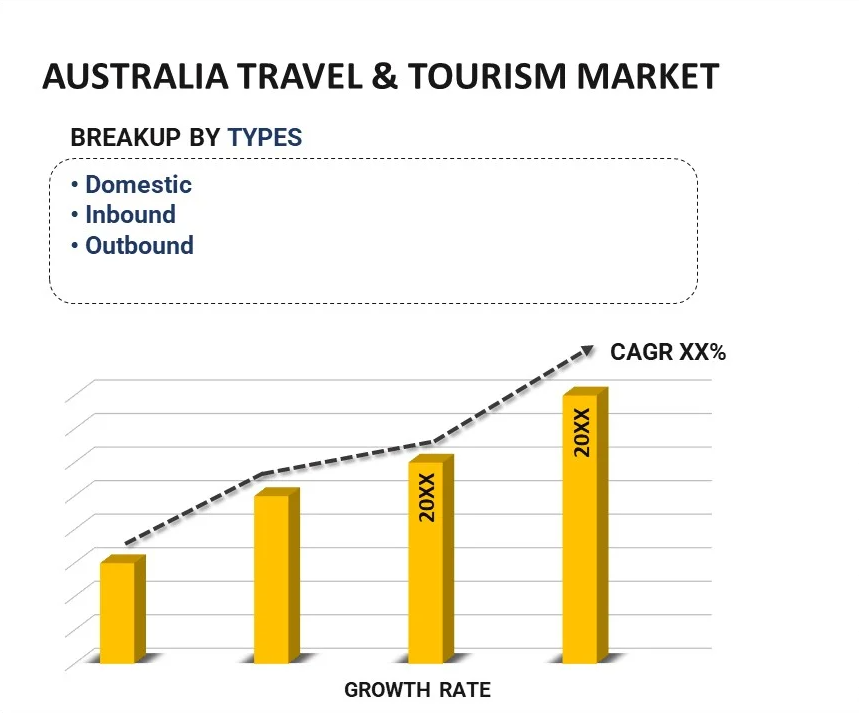
Australia’s adventure tourism industry is experiencing exponential growth, driven by rising demand for outdoor experiences, sustainability efforts, and government investments. This trend is further reinforced by the steady expansion of the Australia travel economy, which continues to generate jobs, increase visitor spending, and support regional development. As the market continues to expand, innovation and responsible tourism practices will be key to sustaining this momentum. With a promising future ahead, Australia is poised to remain one of the world’s premier adventure tourism destinations through 2031 and beyond.
The post Australia’s Adventure Tourism Market Set for Explosive Growth by 2031 appeared first on TheAussieway.
]]>The post Managed IT Services: Australia’s Growing Digital Backbone appeared first on TheAussieway.
]]> The managed IT services Australia market is experiencing unprecedented growth, with anestimated annual expansion rate of 9.2%, projected to reach a staggering $44.3 billion by 2025. As businesses increasingly rely on digital transformation to stay competitive, IT strategies are evolving at a rapid pace. This shift is driving a surge in demand for managed service providers (MSPs), who offer comprehensive solutions to streamline operations, enhance cybersecurity, and optimise cloud infrastructure.
The managed IT services Australia market is experiencing unprecedented growth, with anestimated annual expansion rate of 9.2%, projected to reach a staggering $44.3 billion by 2025. As businesses increasingly rely on digital transformation to stay competitive, IT strategies are evolving at a rapid pace. This shift is driving a surge in demand for managed service providers (MSPs), who offer comprehensive solutions to streamline operations, enhance cybersecurity, and optimise cloud infrastructure.
Organizations of all sizes are recognizing the benefits of outsourcing IT services, particularly in an era where technology is a fundamental pillar of business success. From small startups to large enterprises, companies are embracing managed IT services to gain access to specialized expertise, reduce operational costs, and ensure round-the-clock IT support. As businesses grow more reliant on technology-driven solutions, the need for robust and scalable IT frameworks becomes even more essential. This shift is driving a surge in demand for managed service providers (MSPs), who offer comprehensive solutions to streamline operations, enhance cybersecurity, and optimise cloud infrastructure.
A Shift Toward Outsourcing

One of the most significant IT outsourcing trends in recent years is the growing preference for businesses to delegate their IT needs to specialized MSPs. This transition allows organizations to focus on core operations while leveraging the expertise of third-party providers for IT maintenance, cloud management, and cybersecurity. Australia and New Zealand together host approximately 1,300 MSPs, playing a crucial role in supporting businesses across various industries. These providers contribute to the regional economy by fostering innovation, creating jobs, and enhancing overall digital resilience.
Key Drivers of Growth
Increasing Demand for Cloud Solutions
The rise of cloud computing services is a major force behind the expansion of managed IT services. Businesses are increasingly migrating to cloud-based infrastructure to benefit from scalability, cost savings, and operational flexibility. With the surge in remote work and digital collaboration, cloud solutions provide companies with secure and efficient platforms to store and manage data. MSPs are at the forefront of this transformation, offering businesses tailored cloud strategies that enhance performance and security.
Heightened Focus on Cybersecurity
The importance of cybersecurity in managed IT has never been more critical, with cyber threats becoming increasingly sophisticated. Businesses in Australia face growing risks from cyberattacks, data breaches, and ransomware incidents. Managed IT service providers offer proactive security measures, including continuous monitoring, threat detection, and compliance support. By integrating advanced security frameworks, MSPs help organizations mitigate risks and safeguard sensitive information.
Cost Efficiency and Operational Flexibility
Businesses are always looking for cost-effective ways to enhance productivity, and outsourcing IT services provides a practical solution. The Australia IT solutions landscape has evolved to include pay-as-you-go models, allowing organizations to scale their IT operations based on demand. Instead of investing in expensive in-house IT teams, companies can rely on MSPs for specialized services, ensuring maximum efficiency and reduced overhead costs.
Growing Need for IT Support and Maintenance
As businesses expand their digital footprint, the need for reliable IT support Australia has intensified. Downtime and technical issues can severely impact productivity and revenue. MSPs offer 24/7 monitoring, remote troubleshooting, and on-site assistance, ensuring minimal disruption to business operations. This continuous support structure enables companies to operate efficiently while focusing on growth and innovation.
Increasing Adoption of Cloud Services

Cloud computing has revolutionized technology solutions for susinesses, offering flexibility, scalability, and cost-efficiency. Companies can scale their IT resources up or down based on demand, eliminating the need for expensive on-premise hardware. MSPs play a crucial role in cloud migration and management by ensuring seamless transitions, optimizing performance, and providing secure data storage solutions. As more companies shift to the cloud, managed IT providers continue to refine their offerings to meet evolving business needs.
Managed service providers (MSPs) offer end-to-end IT infrastructure management, ensuring businesses can seamlessly adopt and manage cloud technologies. These providers assist with cloud security, backup and disaster recovery, and hybrid cloud implementations, allowing companies to leverage the best of both private and public cloud environments. With increasing competition and customer demand for faster services, cloud adoption is becoming a necessity for Australian businesses seeking innovation and efficiency.
Rising Cybersecurity Concerns
With cyberattacks growing in sophistication, businesses must prioritize security to protect their data and infrastructure. Robust IT Infrastructure Management is critical in mitigating risks associated with data breaches, ransomware, and other cyber threats. MSPs deliver comprehensive cybersecurity solutions, including vulnerability assessments, threat detection, and incident response strategies. By implementing proactive security measures, managed IT providers help organizations safeguard their digital assets and maintain regulatory compliance.
The increasing frequency of cyber threats highlights the need for Australia business IT services that focus on cybersecurity. MSPs assist businesses in implementing multi-layered security frameworks, ensuring compliance with Australia’s stringent data protection laws. Services such as Security Information and Event Management (SIEM), endpoint protection, and zero-trust security models help businesses mitigate cyber risks and maintain a secure IT environment.
Focus on Digital Transformation
Digital transformation is a key driver of managed IT growth, enabling businesses to enhance efficiency, improve customer experiences, and stay competitive. MSPs facilitate this transformation by integrating emerging technologies such as artificial intelligence, automation, and the Internet of Things (IoT). By leveraging these innovations, companies can streamline operations and drive long-term success in an increasingly digital world.
Many businesses are shifting towards IT modernization strategies that incorporate intelligent automation, predictive analytics, and remote working solutions. MSPs support organizations in making this transition by providing remote IT support, ensuring seamless connectivity, troubleshooting, and maintenance. This enables businesses to focus on their core functions while leaving IT management to expert professionals.
Compliance with Regulations
Navigating Australia’s regulatory landscape can be complex, with strict data protection and privacy laws in place. Businesses must adhere to compliance frameworks to avoid penalties and reputational damage. MSPs assist in this process by ensuring organizations remain compliant with evolving regulations, implementing secure data management practices, and conducting regular audits. By providing expert guidance, managed IT providers help businesses operate with confidence in a highly regulated environment.
In industries such as finance, healthcare, and government, data protection and compliance are crucial. MSPs ensure that businesses adhere to legal frameworks such as the Australian Privacy Act, Essential Eight cybersecurity guidelines, and ISO 27001 certification requirements. Through regular security assessments and policy enforcement, managed service providers help companies maintain compliance while minimizing risks associated with non-compliance.
The Role of Top Managed IT Service Providers
The Australian market is home to some of the most innovative managed IT service providers, offering specialized solutions tailored to different business needs. The top 50 MSPs in Australia excel in areas such as remote IT support, cybersecurity, cloud management, and IT infrastructure optimization. Their expertise allows businesses to enhance efficiency, reduce downtime, and improve overall IT performance.
Here are some of the leading MSPs in Australia:
- First Focus – Offers comprehensive IT solutions, including cloud, security, and networking services.
- Centorrino Technologies – Specializes in managed security and IT support services.
- ADITS – Recognized for customer-centric IT solutions and consulting.
- ONGC Systems – Delivers cloud migration and cybersecurity services.
- Command IT Services – Provides scalable managed IT solutions for small and medium businesses.
- Brennan IT – Focuses on enterprise IT management and digital transformation.
- CT4 – Specializes in cloud computing and data management.
- eStorm Australia – Offers IT strategy consulting and cybersecurity solutions.
- Powernet IT Solutions – Provides IT support and infrastructure management services.
- Fujitsu Australia – A leading provider of end-to-end IT solutions and infrastructure.
For the full list of the top 50 managed service providers in Australia, businesses can refer to industry rankings provided by platforms like Cloudtango and MSP Pie.
Engaging with these top MSPs ensures that businesses have access to cutting-edge Australia business IT services, helping them remain competitive, secure, and future-ready in an ever-evolving digital landscape.
Trends in Service Diversification and Customer Experience
1. Service Diversification
The landscape of IT outsourcing trends continues to evolve as MSPs expand their service portfolios. Traditionally focused on IT infrastructure management, many providers are now incorporating IT consulting, cloud services, and project management into their offerings. This diversification allows businesses to access comprehensive Australia IT solutions under a single umbrella, streamlining their digital operations and ensuring seamless integration of new technologies.
2. Customer Experience
Delivering an exceptional customer experience is becoming a priority for MSPs. Companies seek responsive and personalized IT services for SMEs, ensuring that businesses of all sizes receive tailored support. Managed IT providers are investing in user-friendly platforms, real-time assistance, and proactive maintenance to meet modern expectations. By focusing on customer-centric strategies, MSPs enhance client satisfaction, build trust, and strengthen long-term partnerships.
3. Transition to Cloud Service Providers
As cloud adoption accelerates, MSPs are shifting their focus from hardware procurement to cloud service management. Organizations are increasingly leveraging digital business strategy to enhance agility and scalability. Managed IT providers play a vital role in this transition, helping businesses migrate workloads, optimize cloud environments, and ensure data security in multi-cloud infrastructures. This shift enables companies to achieve operational efficiencies while reducing capital expenditures on legacy systems.
Future Prospects for MSPs in Australia
The MSP sector in Australia is poised for significant growth, driven by increasing demand for outsourced IT solutions, cloud services, and cybersecurity expertise. As more businesses adopt digital-first approaches, the need for reliable and innovative IT partners will continue to rise.
For companies navigating IT outsourcing trends, the key to success lies in adaptability. By forming strong partnerships with MSPs, businesses can leverage cutting-edge technology, optimize costs, and enhance operational resilience. Whether through remote IT support, cloud optimization, or cybersecurity strategies, MSPs are set to play an integral role in shaping Australia’s digital economy.
Moreover, the importance of IT services for SMEs cannot be overstated. Smaller enterprises, which often lack dedicated IT departments, rely on MSPs to provide enterprise-level expertise without the associated costs. By offering tailored solutions that address the unique challenges of SMEs, MSPs contribute to a more competitive and technologically advanced business landscape.
Conclusion
The demand for managed IT services is set to continue its upward trajectory, driven by advancements in cloud computing, heightened cybersecurity requirements, and the ongoing digital transformation. As organizations seek reliable IT support Australia, they turn to managed service providers to enhance security, optimize infrastructure, and drive business growth. With a strong network of MSPs offering innovative solutions, Australia’s digital landscape is poised for a future of sustained technological evolution and economic success.
The post Managed IT Services: Australia’s Growing Digital Backbone appeared first on TheAussieway.
]]>The post Top 10 Small Profitable Business Ideas In Australia appeared first on TheAussieway.
]]>
As an Australian, if you are also seeking smart and small business ideas to put into action, then you have come to the perfect spot. Roughly 99% of all firms in Australia fall under the small and medium-sized category, and these businesses are accelerating the Australian economy. As owners of small businesses, you’re actually a part of Australia’s thriving sector. Australia’s economy is booming, mostly due to the contributions of small and medium-sized firms.
Here are some important insights:

Image Credit: https://www.demandjump.com/blog/what-is-an-insight-in-marketing
As per an analysis done by NAB (National Australia Bank), small and medium-sized businesses constitute the backbone of the Australian economy, where they create 7 million jobs and make a substantial contribution to 57% of Australia’s GDP, giving space to creative entrepreneurship. The total GDP, according to World Bank data for 2021, is 1552.67 billion US dollars. These figures explain that Small businesses in Australia are playing an improving role in improving the economic expansion and prosperity of the country
The primary sources of revenue in Australia are driven by exports in the mining sector, banking, manufacturing, and telecommunications. The service sector contributes to 70% of GDP in the country, and this includes industries like education, tourism, and financial services. The population of Australia is around 26 million, and per capita income is $66,408, which creates a perfect atmosphere for Australian small businesses to flourish. As reported by Biztraction, the industrial sector contributes to 25.3% of GDP, and agriculture comprises 3.6% of GDP in the country.
The Australian economy is well managed, and it has a strong population. According to NAB, the bedrock of small and medium-sized businesses in the Australian economy is formed by small and medium-sized businesses. Australia has a skilled workforce and a supportive government that has come up with policies that help the citizens execute business freely. Investors are also benefiting here to expand business ventures, and hence it is always a win-win situation for investors and small businesses simultaneously.
Now, let’s look at the top 10 profitable businesses in Australia that are tailored for the market, and if you are planning to start your own small business, then this guide will help you do so.
Top 10 small business Ideas
1. Laundromats
The Laundromat business idea may sound a little distinct, but it is one of the most profitable business ideas in Australia. This business is about dry cleaning and laundry, which offers great returns. Annually, the laundromat business contributes $2 billion to the Australian economy, and an average Australian laundromat generates a return of approximately 25% of the initial investment every year, where the earnings range from $300 to $1300 per day.
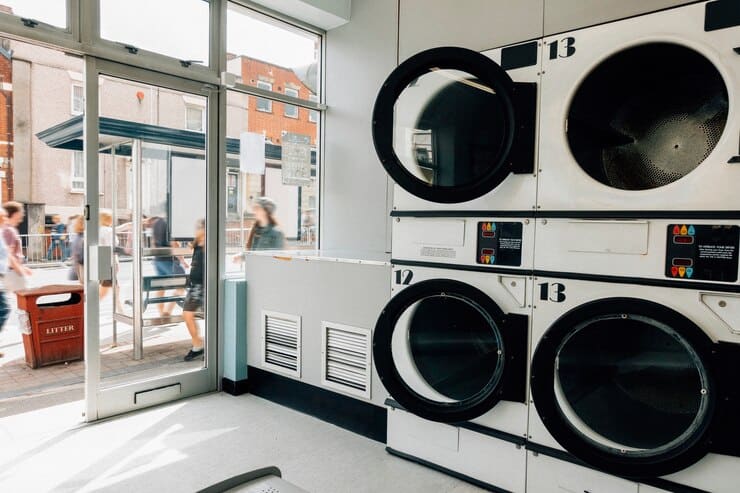
As an individual, if you are planning to make your mark in this evergreen business, then it will definitely give you profit, and you can expect your income to rise in the coming future. The laundry business is growing in Australia, and many Aussies have started small in the cleaning business. As per a recent report, the predictable growth rate of the laundry services industry is 5%, which will reach $127 billion by 2025. The laundromat industry has a success rate of 95%.
Starting from scratch, a laundromat business will need an initial investment between $100,000 and $400,000 but yes, the cost will also depend upon the size, rent, number of machines being used, equipment cost, etc.
2. Cleaning Business
Those looking for small profitable business ideas will find that a cleaning business in Australia makes a lot of sense. This business has become more lucrative during the COVID-19 scenario because companies call the employees back to the office and it has become a top priority for organizations to maintain cleanliness.

With heightened awareness of the significance of workplace hygiene, businesses are going the extra mile to meet cleaning needs, and every organization is strict about the COVID parameters. To curb the spread of COVID-19 cleaning services are in demand.
Cleaning services are not just limited to commercial settings in Australia; they encompass residential and industrial levels as well. Cleaning services include the cleaning of desks, upholstery, furniture, floors, sandblasting building exteriors, carpets, windows, steam cleaning, and much more. Small businesses often face unique challenges, but if you decide to start your own cleaning firm, there will be fewer challenges and more income. You will grow soon.
In 2020, the global cleaning service market size stood at $55,715.0 million, and in Australia, the cleaning industry boasts a market size of $12 billion, featuring 35,248 registered cleaning businesses. The sector boasts a profit of typically 10% to 28%, and the range is amazing for any small business owner. In 2022, the cleaning business market size will have increased to $9.9 billion, and the commercial cleaning services market will have increased by 19.3% in Australia. Every year, an average commercial cleaning business makes $70,000 to $100,000. The most profitable cleaning services are pressure washing, chimney cleaning, gutter cleaning, poor cleaning, etc.
Most Australian franchises for cleaning businesses are available between $5000 and $50,000. Moreover, you need no formal education to start this business, and it is profitable in the long run.
3. Freelancing
For small businesses, freelancing has its own unique place because it is an independent way to work. Freelancers can choose the projects and work remotely. They have the freedom to choose their schedules and statistics show that freelance workers are more productive and happier. They earn more than traditional employees. The COVID-19 pandemic underscored the value of freelancing as many professionals lost their jobs and turned to freelancing and the demand for freelancers rose like anything during the pandemic.

In the tech sector, the need for freelancers is rising and Australia alone will need at least 200,000 experts in tech by 2030. There are many freelancing opportunities on PeoplePerHour, Upwork, Fiverr, Airtasker, 99Designs, etc. These are the best places for small businesses, like freelancers, to build their unique identity and get work.
Freelancing in Australia is nothing new but now the requirement for freelance work has increased in the country. Freelancers can be hired on the spot, and it gives Australian small businesses the liberty to hire them only when the work is required so they do not have to hire full-time employees and save money in case there is no work at times. Freelancers are only paid when there is work and they need to offer proper work to the employer.
A growing number of Australians are working in the gig economy and in 2019 alone, it grew by 33 percent and was valued at $6.3 billion. Gig workers will make up 40% of the global workforce by 2025.
4. Restaurant and Food Takeaway
The restaurant and food takeaway business in Australia is the most profitable sector. Many small businesses that entered the food and restaurant industries became big in no time. Some food chains started so small, and today they have a big name in the market, like Black Star Pastry, T2 Tea, Zumbo Patisserie,Gelato Messina, and much more. Through innovation, quality, and dedication, many Australian small businesses have gained prominence.

The food industry in Australia is very profitable and contributes to the country’s economy, with restaurants, cafes, and takeaways generating a turnover of AUD$39.75 billion. The industry employs 817,500 individuals, which constitutes 6.2% of the total workforce. You must ensure compliance with health and safety regulations and meet your goods and services tax obligations to execute the food and restaurant business smoothly in Australia.
Consider food franchise opportunities and list your business on a Google local listing. Also explore food delivery apps like MenuLog,DoorDash, etc. In 2022, the annual revenue of Australian food businesses like cafes, restaurants, and food takeaway businesses amounted to over 58 billion dollars. From 2022 to 2023, the business recorded revenue of over $23 billion, an increase of $2.4 billion.
5. Art Entertainment and Recreation
The art and recreation services industry includes a wide range of activities, from exhibits and live performances to sports and recreational activities. The sector has gone through steady growth and it has contributed immensely to the Australian economy. From 2015 to 2020, the revenue of the industry has increased by an average of 0.5% annually.

According to IBIS World, in 2020, the art and recreation service industry generated $7.8 billion and it ranked 11th among sectors with the highest wage in Australia. Though this sector is vast, on specific websites, one can find work and help register their events. Some prominent places to get work are Upfront Events, ArtsCentre, etc., and you can also take advantage of Google Events, which is very reliable for listing your business and events. Update the Google listings from time to time to get satisfactory results.
6. Online teaching classes
The online teaching business has been booming during the pandemic and if you are planning to start this, then do not hesitate. It is the best time to begin this business and the online learner base is growing exponentially so pick up an interesting topic like taxation, accounting, etc. on which you have a good command.

As per your knowledge and expertise, you can choose the subjects you want to teach and create powerful, engaging course content. Learn the technicalities of running an educational website. Choose the price of a particular course and plan the schedule to begin with. Use promotional and marketing strategies for the online academy and spend on webcam, video camera, lighting, classroom backgrounds, editing software, etc.
7. Online fitness training

Image Credit: https://www.researchdive.com/blog/what-are-the-benefits-and-drawbacks-of-online-fitness-training-programs
Another lucrative venture that can be started as a small business in Australia is personal fitness training. This venture offers you the flexibility to choose your schedule and train. You can work independently or join fitness studios, gyms, etc. You can join a hospital too.
Today, health and fitness are given a lot of importance so personal training is lucrative to pursue. At present, two-thirds of Australians engage in exercise for at least 100 minutes every two weeks. The market size for personal trainers in Australia is $435 million and it features 8012 industry professionals in the business. The personal trainer industry market size in Australia will reach $491.7 million in 2023. The market size of the gyms and fitness centers industry in 2022 is 1.9 billion.
According to PayScale, personal trainers earn up to $66 per hour and trainers can always enhance their skills and earn more. Being a personal trainer means you must increase your knowledge in health and nutrition, strength and conditioning, weight loss, weight gain, rehabilitation, etc. In Australia, you need a Certificate III or IV to begin. You can look for opportunities on Air Tasker and Bark.com, and you can also list your business on Google.
8. Online retailing/e-commerce
Online retailing or e-commerce, is a small business concept that is in constant demand. Many companies started small but became big giants. Online shopping has changed things so it is the new norm and shoppers are interested in buying products online and making online payments securely. They like the purchases to be delivered at their doorstep conveniently. In 2020, when the pandemic struck, online retail sales went up and there was remarkable growth experienced in Australia. Online sales accounted for over 15% of the retail market in the first quarter of 2021.

The purchase of domestic products in Australia reached 51.1% online. Over 5 million households in Australia engage in online shopping. The most sought-after category for online purchases in 2021 was homewares and appliances. As per IBIA World, the online retailing market in Australia stands at $44 billion, which includes 76,324 businesses and 80,035 employees. Combining physical and online stores, retailers enjoyed significant growth in June 2021 because of lockdowns in many regions of Australia.
The online shopping sector is predicted to grow by 35.3% and this is an opportune time for those who are seeking ideas for small businesses and want to start earning. You can sell anything online like jewelry, clothes, makeup items, art, etc. A vast expanse of the internet is there to help you and you can also use established platforms like Amzon and eBay to promote your business.
9. Website development
If you are looking for the best small profitable business ideas that are interesting, entertaining, and lucrative, then website development will be liked by you. The video game industry is thriving and there are opportunities for entrepreneurs to capitalize on the growing demand for website building.

As per the Global Auralia Report, the video game industry is going through remarkable growth, with more than 2000 software developers employed. Analysts estimate the value of this sector to be $2.96 billion annually in Australia, as per Biztraction. In 2021, the sector experienced 22% growth from the previous year and was valued at $226.5 million in revenue. The numbers will boom further.
Web development empowers businesses to establish an online presence, enhancing accessibility, visibility, and customer engagement. With professional services like WebCreationAU reviewed by Adam, businesses can leverage tailored solutions for effective digital representation, driving growth and success in the competitive online landscape.
If you have any coding skills or are eager to learn them, then this can be your start. Create interactive and entertaining games for educational purposes. Start your own game development agency, too, with no capital from home.
10. Babysitting
If you still feel you do not have any skills and little or no capital to invest and think that these top 10 profitable businesses in Australia are not your cup of tea, then babysitting can be an ideal profession for you. You need a few skills, like patience and the ability to care for infants and children. Just enjoy spending some time with them and this career can be extremely rewarding.

As there is a rise in working parents, there is an increasing need for reliable and experienced babysitters. Your service can be invaluable to busy parents and all you need is the affinity to work with their children. You have to change the diapers of the baby, give them nutritious meals, play with them, and keep them happy and engaged. Also, you need to ensure a safe and nourishing atmosphere for them. On average, a babysitter in Australia charges between $20 and $30 per hour and in major cities, the rates can be higher. Rates can always be negotiated and they are different for daytime and evening.
Final Thoughts:
Consider these small profitable business ideas to embark on your entrepreneurial journey and contribute to the thriving small business community that drives the nation’s economy. The idea doesn’t have to be unique all the time, but it must have the potential to capture a market that can give you good returns. So, think well, plan out what all you can do and then decide which business is best suited for you in Australia. So, Aussies, follow your passion but make sure it gives you profit so you keep going and growing in your career.
The post Top 10 Small Profitable Business Ideas In Australia appeared first on TheAussieway.
]]>The post Australia’s Economic Growth Performance So Far And What’s Expected In 2023 appeared first on TheAussieway.
]]>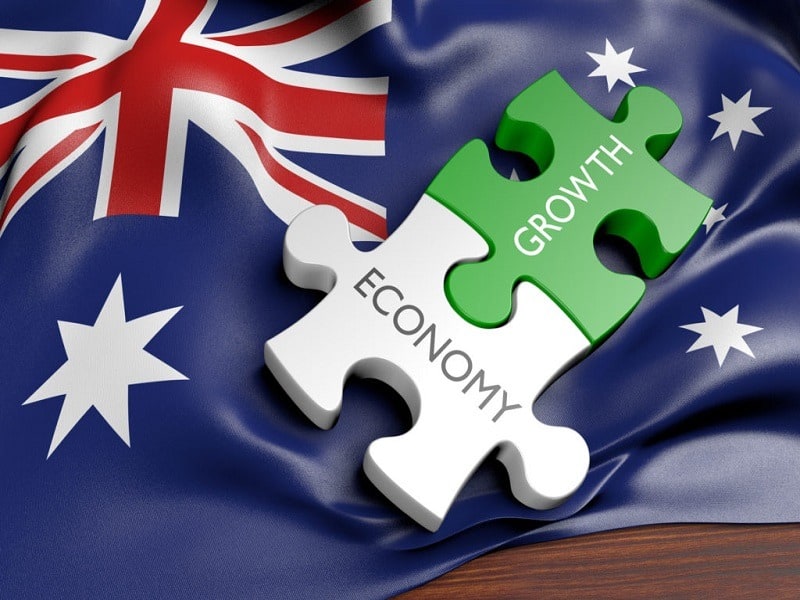
The quality of life in Australia is among the best in the world. Its economy has been expanding for over 21 yrs and it is considered to be the most stable nation as far as the Economy is concerned.
It is one of the few Western nations that avoided a slump. While the country’s debt as a proportion of GDP is 10%, the unemployment rate is only 5.4%. What is the cause of this achievement? Certainty is one thing.
Australia has recently been going through a mining surge. Basic materials are exported by the nation. China and Malaysia are two growing Asian nations that are the main drivers of demand. China has been the nation’s top business partner since 2007.
The nation benefits greatly from rising commodity values as well as from foreign investment in its mining industry.
However, it is no secret that the world economy is constantly shifting, and the most recent COVID-19 impacts seem to only accentuate this reality.
In particular, lockdowns and regulations related to the nation’s reaction to the global pandemic have severely hampered the Australian economy.
Nevertheless, it is anticipated that the economy will adjust to these changes through worker development and the adoption of a greener, more sustainable strategy.
Here, we briefly discuss the present economic situation in Australia, how COVID-19 changed everything, and the prospects for the Australian economy going forward.
Australia’s Current Economic Situation
It’s crucial to first comprehend what we truly mean by the term “economy” in order to comprehend the current state of the Australian economy.
There are a few fundamental concepts to understand even though we won’t be able to cover everything about what a market is right now.
An economy is a network of relationships between the factors of creation. There are also regional economies, national economies, and global economies, so output and consumption take place on a variety of scales.
Simply put, an economy consists of buyers and sellers as well as the players in the government who control and tax these exchanges.
Gross domestic product, also known as GDP, is a common metric for assessing an economy. The Gross Domestic Product (GDP) of Australia is a gauge of how much economic development there is or isn’t.
Therefore, it is said that Australia’s GDP growth rate is rising when consumers can make big purchases and sellers can satisfy those demands. Sellers, however, are then unable to sell when consumers are unable to spend. It is said that Australia’s economy is collapsing in those circumstances.
Of course, this is an oversimplified explanation of what an economy truly is, but in general, this buyer-seller interaction comes up when most people discuss the Australian economy.
This concept of a healthy economy is also related to the Australian inflation rate, supply and demand, production prices, resource availability, and other factors. Again, we won’t get into the specifics of the business at this time.
However, it’s fair to say that not all areas of the Australian economy are doing so well.
Australian Economy’s Response to COVID-19

Image Credit: https://www.mckinsey.com/featured-insights/asia-pacific/the-curse-of-the-lucky-country-in-search-of-economic-antidotes-to-covid-19
As a reaction to COVID-19, Australia implemented lockdowns, contact tracing, mask-wearing, travel bans, and social seclusion. But depending on the sector you worked in and where in Australia you lived, these changes could have a significant impact on the economy.
Nevertheless, it cannot be denied that COVID-19 has a significant influence on both the Australian workforce and the country’s GDP. Among COVID-19’s effects are some of the following:
- Looking out across the 2020s
- Education Disruption
- Healthcare Disruption
- Supply Chain Disruption
- Inflation Rate in Australia
This undoubtedly condensed list of some COVID-19 effects on Australia’s industry is undoubtedly lacking. Now, however, let’s examine each of these elements and how they impact Australia’s economic growth or the absence thereof.
Looking out across the 2020s
And so, here we are in the middle of 2022: An economy that roared back to life following the COVID recession, but had its typical trade and migration links to the world disrupted, now battles with labour and supply chain shortages as the spectre of a global inflationary crisis slowly approaches.
If the only goal of our strategy is to address the economic problems of 2022. However, the shocks from the Covidian period will have a much greater transformative impact on the Australian economy than just these current problems.
Moving ahead, it is evident that Australia will need to reconsider many of its fundamental economic presumptions in order to succeed post-COVID. Over the next ten years, five new structural obstacles are likely to make a difference in whether we succeed or fail.
Disruption in the Educational System
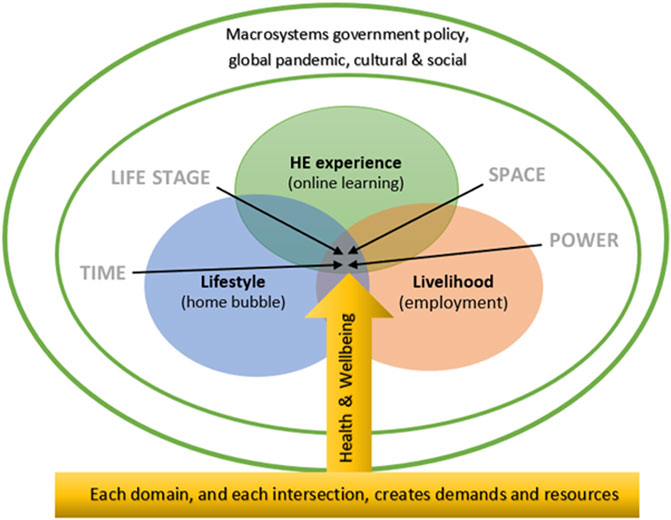
Next, COVID-19 limitations have severely disrupted education at all levels. Over 87% of the pupil population worldwide, including every state in Australia, will no longer receive a K–12 education by March 2020, according to UNESCO.
Australian students who were upskilling or pursuing higher education were also impacted, in addition to the fact that many of them were pulled out of school to learn for the first time in a virtual setting.
New educational approaches will be necessary to support the Australian economic system’s development, especially for sectors that demand highly skilled workers or workers who learn best in a face-to-face environment.
Medical disruption
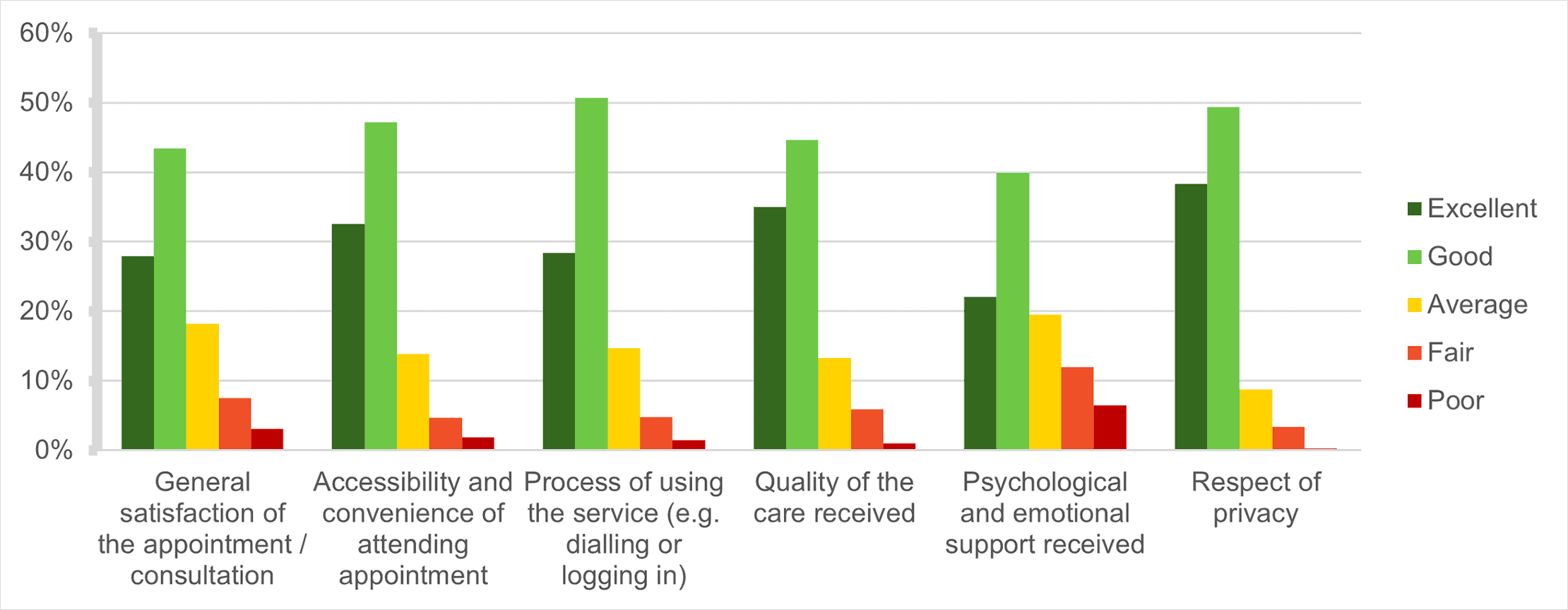
Once more, Australia’s economy is in jeopardy without a healthy labour population. Therefore, other medical treatments may be delayed as hospitals concentrate all of their efforts on avoiding COVID-19 outbreaks in the future.
According to the findings of a WHO survey, even a year into the pandemic, about 90% of countries are still reporting one or more critical healthcare disruptions caused by COVID-19.
As a result, even though these protocols are in place to protect Australians from COVID-19, the disruption in the provision of appropriate healthcare is another factor contributing to the destabilisation of Australia’s GDP.
Supply – Chain Breakdown
Although it was only barely touched upon earlier, the relationship between supply and demand is crucial to comprehend the state of an economy.
You’re in problems whether there isn’t enough supply to meet demand from customers or there is too much supply compared to demand. The general economy operates under the same tenet.
Supply chains have been severely harmed by COVID-19 and its associated travel bans, border restrictions, and workforce disruptions, as anticipated.
Medium and small Australian Businesses are more likely to fail when they can’t procure enough products to sell to consumers. And the general economy suffers because there are fewer businesses to satisfy consumer demand.
Apart from that the bitter economic relations between Australia and China have also contributed to disruption in the supply chain.
Inflation Rates
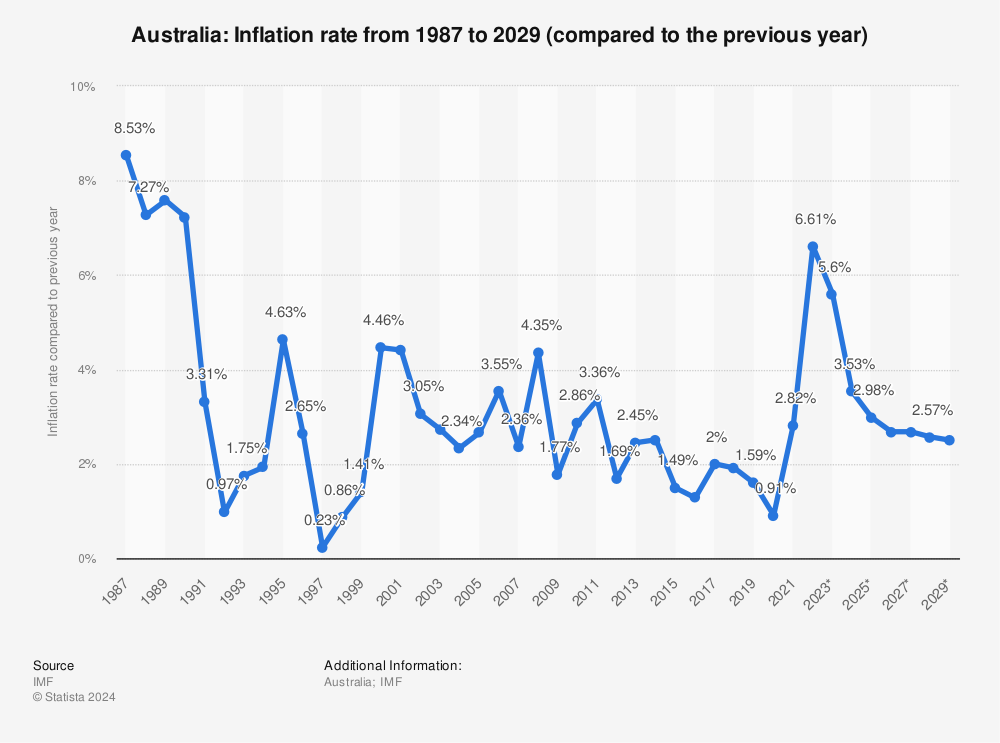
Another worldwide issue that is starting to affect Australia is higher inflation.
After two years of gradually increasing supply chain pressures, the Russian invasion of Ukraine earlier this year caused a sharp increase in energy and food costs. Australia’s inflation soared as a consequence, reaching a record-breaking 6.1% in the June quarter.
In just four months, the central bank was forced to increase rates from 0.1% to 1.85%, and it will be forced to continue fighting until inflation returns to the target range of 2-3%.
Despite the fact that these rate increases are essential, they are burdening the economy’s demand side. We already face significant labour and supply chain constraints on the supply side. And as interest rates rise, customer confidence and spending are declining, hurting the demand side.
Undoubtedly, the Australian inflation rate must be viewed in a larger context. Australian inflation is only two-thirds of that of our rivals when compared to the OECD. This is because Australia produces a lot of food and energy, the two commodities that account for the majority of inflation. As a result, our agricultural and energy industries are protecting us from the full force of the tide.
Australian small businesses have been severely impacted by higher inflation rates, and while taming inflation will be challenging, it won’t be as challenging as in most other developed nations.
Australian Economy Forecast
Numerous forecasts have been made regarding the direction of the Australian economy in the wake of COVID-19.
And while it might take some time for the Australian economy to recover from the undeniably significant setbacks it has suffered since March 2020, the changes that could happen going forward aren’t necessarily all negative.
But in order for Australia’s economy to grow over the coming years, a few things will probably start to alter there:
- Development of the workforce will alter.
- Hybrid employment will become commonplace.
- Australia’s industry will change to a green one.
Employment Growth

First and foremost, there will surely need to be changes made in how we train our workforce in the future. Australians are now required to learn and adjust more quickly than ever because COVID-19 will forever change the nature of the workplace (in addition to the rapid advancement of technology).
Early 2021 research from LinkedIn revealed that during COVID-19, 130% more employees spent more time learning and that there were 159% more Leaders who supported learning and development.
Focus-wise, workforce development is probably going to pay more attention to technology, upskilling on a regular basis, integrating data and AI, teaching, mentoring, and management, as well as putting more emphasis on business goals.
To put it another way, any business will require the Australian workforce to be in a constant state of development.
In simple words, we need more Australian Start-Ups.
Hybrid Jobs

The fact that hybrid jobs exist in the Australian economy is another shift brought about by COVID-19. A hybrid job basically combines two or more formerly distinct roles into a single position.
For instance, people who previously only worked as programmers are now sometimes required to also be technical writers and managers.
Whether this strategy will have long-term effects on the employees themselves is still up for debate. But in fact, technology is advancing so quickly that workers worry they will be left behind if they don’t equip themselves with a diverse set of skills.
Making the Switch to a Green Economy
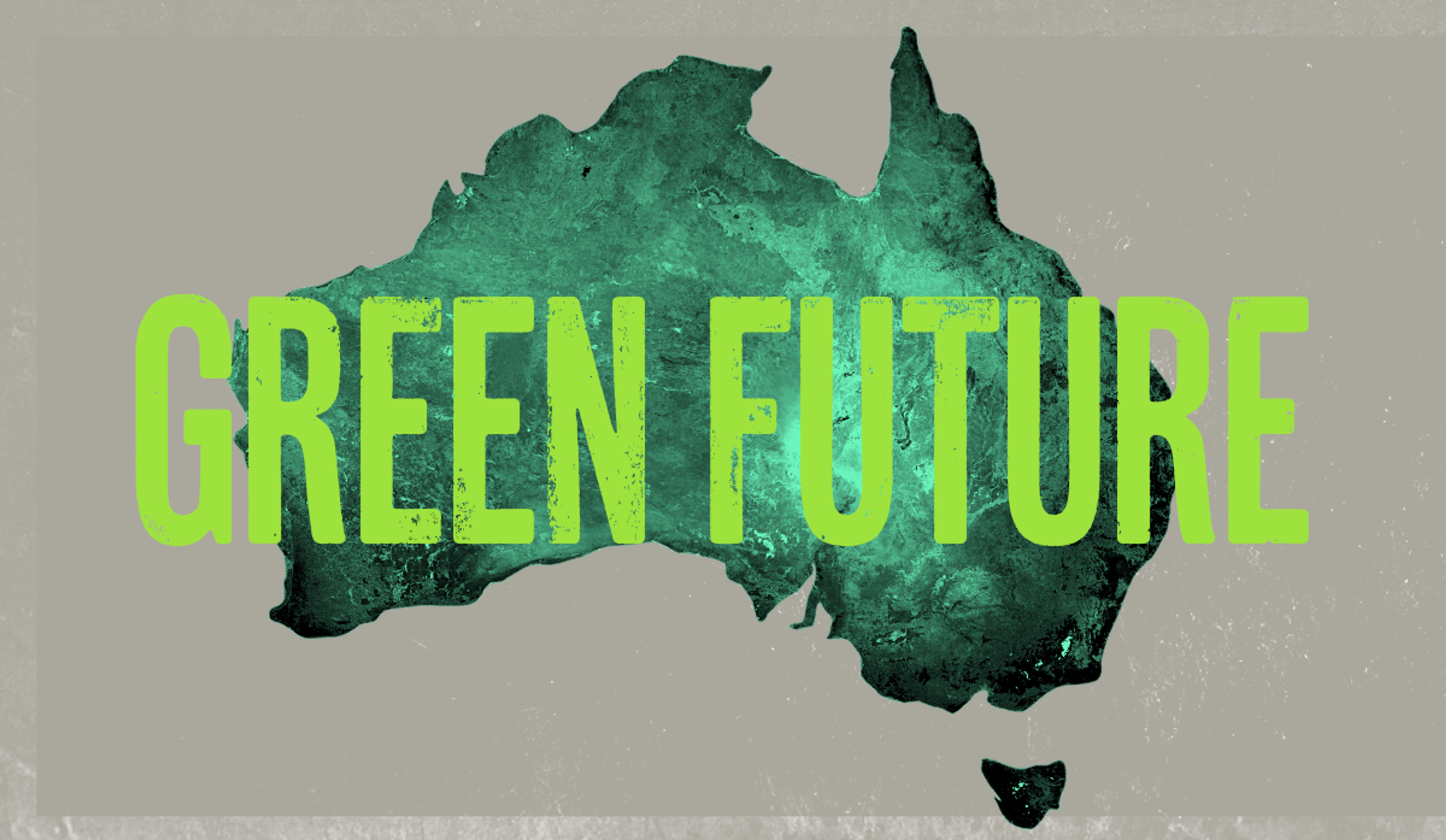
Last but not least, the shift to a green economy is most likely the only forecast for Australia’s economy that has little bearing on COVID-19. The sustainability of Australia’s GDP and climate change are major issues that economics undoubtedly take into account.
You’d be hard-pressed to find an economy that can operate without ecological resources if an economy is solely driven by supply and demand.
Your nation probably buys natural resources even if it doesn’t trade them. In other words, nobody is immune from considering how their economies will be impacted by climate change.
For employees, what does a green economy mean? Time will only reveal.
What’s Next For the Australian Economy?

It is standard practice to conclude economics presentations with a forecast or statement of the future. But today, I’m not going to do that. Our ability to provide reliable quantitative future predictions in a global economy that is suffering from shocks is simply not what it once was.
But we do know that these disruptions won’t stop. Supply networks won’t return to normal overnight, inflation won’t vanish overnight, and volatility will rule the day.
This year has already brought about one significant global black swan, namely Russia’s invasion of Ukraine. The troubling events in Taiwan over the weekend should dispel any illusions we may have had to the contrary.
Australia is not in a position to control these political and economic disruptions. However, we can organise our homes to ensure that we are in the best possible situation to withstand both recent and impending shocks.
The COVID reset is an opportunity for us to rethink some important issues with our economy. What function has migration? Which types of goods? How can technology and money be attracted? What will a productivity plan in 2020 look like? What does industrial supply chain security entail?
The solutions are still being worked out. However, it is these inquiries that offer the framework for modifying the Australian economy to a world in which shocks are prevalent. Our current job is to search for solutions that will guarantee Australia’s upcoming generation enjoys the same level of prosperity and financial security as the present.
The post Australia’s Economic Growth Performance So Far And What’s Expected In 2023 appeared first on TheAussieway.
]]>The post Top Australian Start-Ups For Stock Traders To Watch appeared first on TheAussieway.
]]>
Australia is a nation that is highly regarded around the world for its breathtaking natural scenery and its relaxed atmosphere. However, the nation is less well known for having a vibrant and expanding startup environment that produces a large number of successful firms.
The Australian economy is anticipated to expand by 3.4% in 2022. Due to households using their savings to increase consumption, Australia’s economy expanded quicker than anyone had anticipated, because of Australia’s ability to control After the coronavirus outbreaks, which increased consumer and business confidence, the Australian nation has recovered quickly. The talent, investment, and development in the Australian startup sector have been astounding. Heavy corporate support, entrepreneurial founders, a risk-taking mentality, and a strong emphasis on technology and innovation are the startup sector’s main competitive advantages. The cities, like Sydney and Melbourne, have become promising hubs for technology innovation.
With an enormous increase in firms valued at $100 million or more, as well as a nearly twofold increase in later-stage fundraising rounds since 2015, Australia has taken concerted efforts in recent years to support its startup ecosystem. Due to the $4 billion in new funds that Australian venture capital firms raised over the past five years, it has been a fortunate time for venture capital growth.
According to Statistica data, 345,520 new businesses have opened in Australia over the past year, with firms in artificial intelligence (AI) dominating the startup environment.
With the online collaboration platform Atlassian currently making $200 million a year at a $3 billion value, the area is already producing some significant triumphs. Then there is the email marketing firm Campaign Monitor, which we have been following for a while. In April, it raised a whopping $250 million in its initial fundraising round.
About $300 million in funding for Australian internet startups has been monitored during the past year. Here, we’ve selected 10 tech businesses from the area that may catch the attention of Australian stock traders. These companies are ready to disrupt everything from energy to fashion.
RealAR
Year Founded: 2019
HQ: Gold Coast, Queensland, Australia
Size: 1-10
Founders: Dan Swan, Keith Ahern

The owners of both commercial and residential properties may now more easily understand floor layouts, according to Colliers International, a global provider of real estate services that have co-invested in speeding up Australian start-up RealAR to produce affordable visualization tools on a global scale and improve purchasers’ comprehension of precisely what they are contracting.
RealAR is an Australian 3D technology start-up that works with augmented reality software. The software is designed for use in real estate and allows sellers and buyers to envision a property before it is built. 3D plans can be viewed through their app, so customers can understand the layout of the physical spaces.
Residential owners can also picture how outside vistas and streetscapes will affect their new house or modifications, which may give them the extra confidence they need to make a purchase.
RealAR doesn’t need expensive equipment and can quickly turn flat floor plans or models made in standard 3D formats into virtual experiences that can be seen on mobile devices.
They were founded in 2019 and with one seed funding round, the company raised $120,000. RealAR has two investors funding the start-up Dan Swan and Keith Ahern.
Splashup
Year Founded: 2021
HQ: Sydney, New South Wales, Australia
Size: 1-10
Founders: Nathalie Rafeh, Vivek Bharadwaj

Splashup, an AI-powered digital shopping platform, has just received $150,000 in investment as the Xccelerate21 program’s winner. Through x15, a partnership between the Commonwealth Bank of Australia (CBA) and Xccelerate21, experienced business owners and founders of early-stage startups are supported.
Data and tales both have an impact on investors’ decision-making. And Bhardwaj and Rafeh contributed it. The team finished in the top five to present their case for the 150,000 dollars following a frantic and tough fight among 80 entrepreneurs, some of whom are well-known figures.
Vivek Bharadwaj, who is also the co-founder of Splashup, is ecstatic. According to him, hard times were also the birthplace of businesses like Spotify, Airbnb, and others ones. He senses the responsibility’s weight at the same moment. We need to produce results because everyone is watching.
Splashup received $310K Australian over one funding round and they have two investors. The start-up was founded by Nathalie Rafeh and Vivek Bharadwaj in 2021. The company has 1-10 employees and has its headquarters in Sydney Australia.
WLTH
Year Founded: 2020
HQ: Brisbane, Australia
Size: 11-50
Founders: Brodie Haupt, Drew Haupt
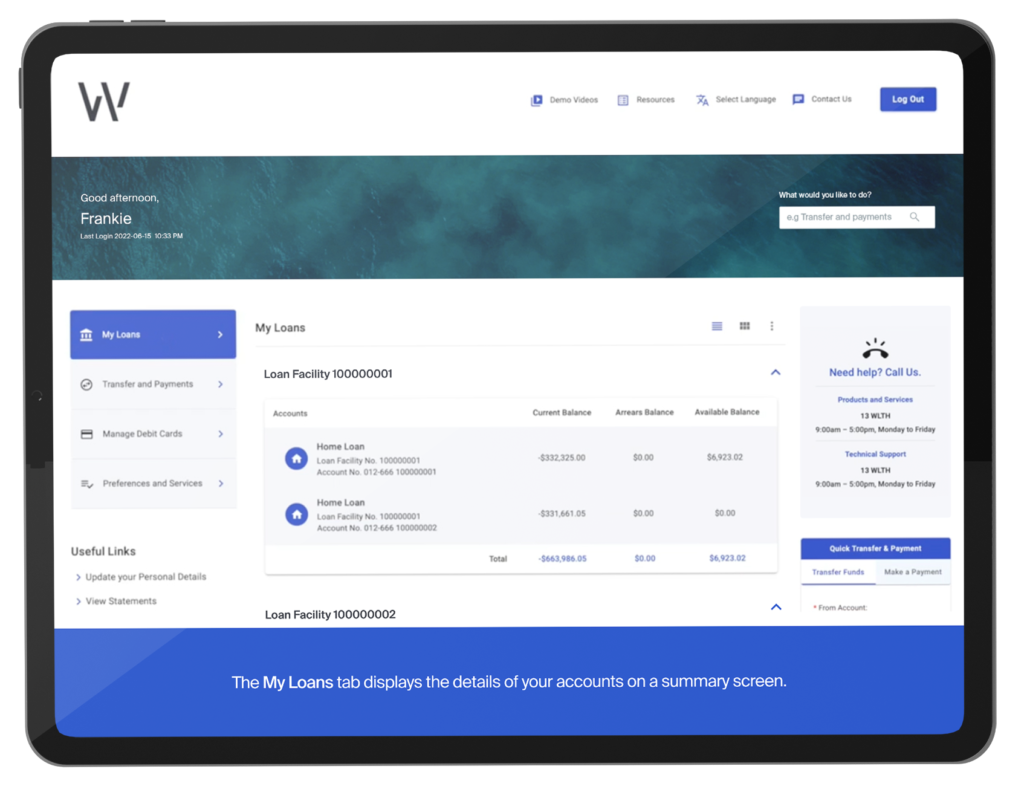
Their service is based on an entirely online application process called the “Lending Loop” that allows anyone to apply for a house loan in just five simple steps and less than 15 minutes. The company provides a digital financial platform that makes it easier for customers to get access to personal finance and the company also provides an array of solutions for businesses that includes lending, merchant facilities and more.
Since we all are aware of how taxing a mortgage may be, WLTH’s main goal is to offer customers low rates and excellent service. Faster approval times are WLTH’s goal, along with hassle-free and speedy application processes. For every loan that is paid off, WLTH and Parley for the Oceans work together to clean up 50m2 of the Australian ocean and coastline.
WLTH is an Australian startup that was founded in 2020 and is currently headquartered in Brisbane, Australia. Since the business was founded, it has seen good success in attracting outside investment for growth and development. Across two rounds of funding, the business has managed to raise a total of $17.2 million to get business to the next level.
YouPay
Year Founded: 2020
HQ: Springwood, Australia
Size: 11-50
Founders: Matt Holme

Global retail e-commerce sales in 2020 amounted to US$4.28 trillion, and in 2022, it is expected that these sales will increase to US$5.4 trillion. Nevertheless, 88% of carts are left unattended, resulting in US$39 trillion in lost revenue annually.
To alleviate this waste and lessen the amount of unwrapped Christmas presents, YouPay, a Brisbane-based fintech business, has developed a novel solution that isolates the paid from the recipient at the checkout.
Recently launched on online street fashion behemoth and eCommerce success story Culture Kings, the company’s ground-breaking eCommerce solution enables online shoppers to fill their carts and instantly send them to someone else to make purchases on their behalf. In the coming months, the solution is expected to be integrated into the eCommerce platforms of about 250 other brands that have registered their intent to offer it.
YouPay’s cooperative approach to online shopping provides a solution to a dilemma that many consumers face every day: how can you swiftly buy the goods you need or want when someone else is responsible for their payment?
For consumers, YouPay’s solution eliminates inefficiencies in the shopping process for a variety of use cases, including purchases from parents, partners, friends, professionals, employers, charities, and more. It also enhances conversions for eCommerce platforms. You can make these purchases using any of the payment options the business typically provides to its customers.
According to research from The Australia Institute, 30% of Australians anticipate receiving a Christmas gift they won’t use, which results in an annual waste of $980 million in gifts that are typically thrown in the trash.
YouPay is a startup in Australia that was founded in 2020 and is currently located in Springwood, Australia. The company provides a solution for collaborative shopping. Users can shop on the Internet and then send their cart to another person so that they can pay. This is perfect for making it easier to share the cost of shopping and getting gifts.
It has already attracted a good amount of outside investment. For example, the company has gone through two rounds of funding as it stands, with the most recent round being worth $2.9 million.
Loam Bio
Year Founded: 2019
HQ: Orange, New South Wales, Australia
Size: 11-50
Founders: Guy Hudson
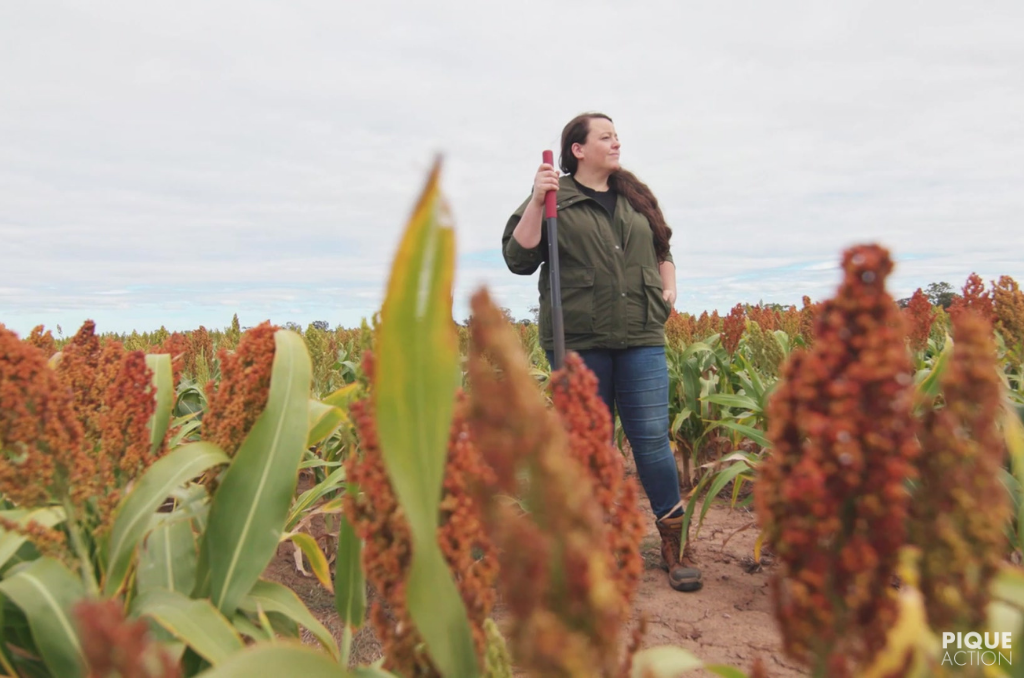
Another Australian startup to keep an eye on is Loam Bio. The company creates technology to address the climate crisis while working in the biotechnology sector. Their technology focuses on inoculating crops using symbiotic bacteria. Their cutting-edge microbiology research will increase agricultural productivity while lowering carbon emissions. The power of bacteria is being studied by Loam Bio, which is also creating technologies to make it easier to use them to create food and life-saving medications.
A company that creates microbial carbon sequestration technology with the goal of replenishing soil carbon. The company’s technology enables farmers to improve the host plant’s fertility and resistance to disease as well as help the soil around the plant’s roots store carbon more effectively, resulting in better quality soil for future planting. Symbiotic microorganisms that live in a mutualistic relationship with crops and build organic carbon in the soil can be inoculated into crops using this technology.
Some of the top climate-tech investors in the world have invested $40 million in a soil biology firm with headquarters in Orange, New South Wales.
The business has demonstrated its technique on a modest scale, and they are now prepared to use the funds at a commercial scale to demonstrate that its methodology for improving soil’s potential to sequester carbon may significantly affect global carbon drawdown.
Guy Hudson founded Loam Bio in 2019 and has managed to raise $50 million in funding. This was raised in two funding rounds, the first in 2020 and the second in 2021. The company’s headquarters are in Orange, New South Wales, Australia and they have 11-50 employees.
6clicks
Year Founded: 2019
HQ: Melbourne, Victoria, Australia
Size: 11-50
Founders: Andrew Robinson, Anthony Stevens, Louis Strauss
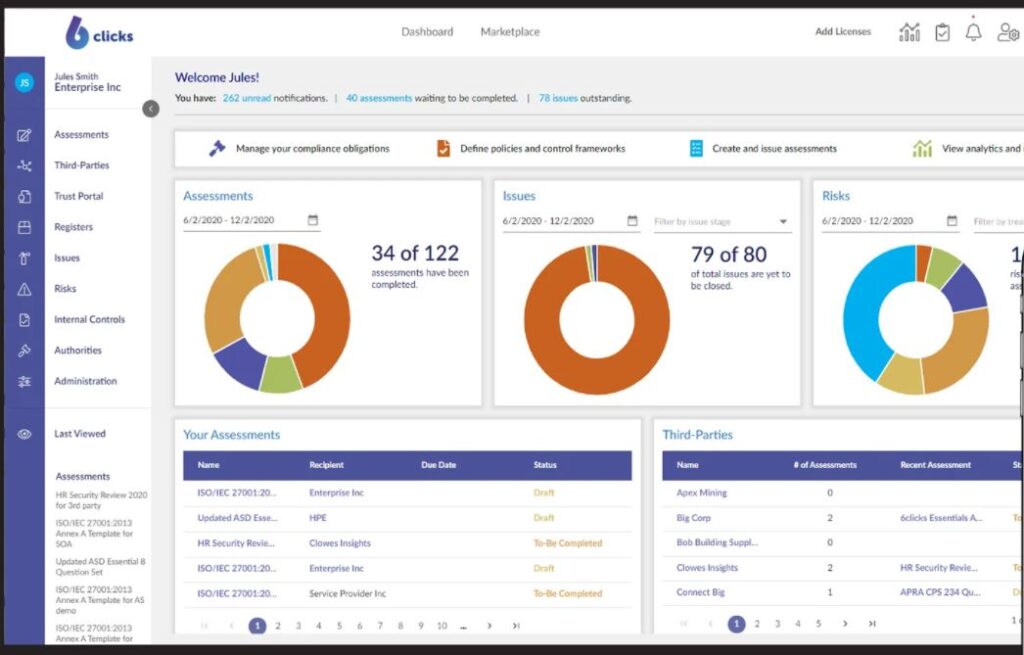
To automate and manage risk assessment, risk management, and compliance, there is a cloud-based platform called 6clicks. You may design, send, and receive assessments using the 6clicks platform to guarantee continuing compliance both inside and outside of your organisation.
The 6clicks proposition is in high demand, which is advancing the situation. The company’s configurable solutions come with pre-existing regulatory frameworks, templates, and libraries for risk assessment, as well as an app to monitor risk and a news site (called 6clicks Pulse) for the most recent regulatory developments.
A dynamic and unstable global regulatory framework, supported by regtech and compliance technology, serves as fuel for this claim. According to Stevens, the global market is currently worth about US$31 billion and is projected to grow to US$88 billion by 2027. And even before the pandemic, this was already trending upward.
In addition to the $2.2 million raised in July of last year, 6clicks has now raised $5 million in a fresh investment round. With the additional funding, the RegTech startup—founded by former KPMG advisors—plans to embark on a global expansion drive.
Melbourne-based, A cloud-based technology firm called 6clicks is designed to automate every step of the risk management process, from assessment to compliance. In conjunction with former KPMG digital consultant Louis Strauss, former partner and chief digital officer Anthony Stevens, and TrustyGate founder Andrew Robinson, the company was created in 2019.
The company’s headquarters are in Melbourne, Victoria, Australia and is made up of around 11 to 50 employees. The founders are Andrew Robinson, Anthony Stevens, and Louis Strauss and they founded the organisation in 2019. Since then, they have managed to gain $8 million Australian in funding, in four funding rounds.
Vacaay
Year Founded: 2019
HQ: Sydney, New South Wales, Australia
Size: 11-50
Founders: Pete McKeon

Despite the industry’s uncertainties during the pandemic, consumers have flocked to Vacaay’s entertaining and cutting-edge travel discovery platform to start planning their vacations well in advance. The company added an astounding 100,000 new members in its first 30 days.
The first of its type in the travel industry, Vacaay delivers curated travel content unlike ever before with a user-friendly mobile app and responsive travel media platform. Travellers can easily explore thousands of breathtaking locations around the globe with a swipe of their smartphone thanks to Vacaay, which enables them to find incredible locations they might not have otherwise thought to visit.
The innovative new platform is proving to be incredibly popular, especially among its target demographic of tech-savvy travellers between the ages of 25 and 45, with users exploring more than 75,000 locations in a single day.
Vacaay is a technology platform that works in the travel industry. The business provides organisations with the ability to enlarge their reach, gaining new audiences and customers. It does this by collecting data about consumer travel behaviours. Holidayers can visit the Vacaay website and create an itinerary which then helps tourism boards prepare and refine their marketing strategy. The website is made up of promotional content for different places in the world, to inspire the consumer on where to travel.
Vacay was founded in 2019 by Pete McKeon. It has its headquarters in Sydney, New South Wales, Australia and has around 11 to 50 employees. The tech company has raised $250,000 from one funding round in October 2019.
MGA Thermal
Year Founded: 2019
HQ: Newcastle, New South Wales, Australia
Size: 1-10
Founders: Alexander Post, Dylan Cuskelly, Erich Kisi
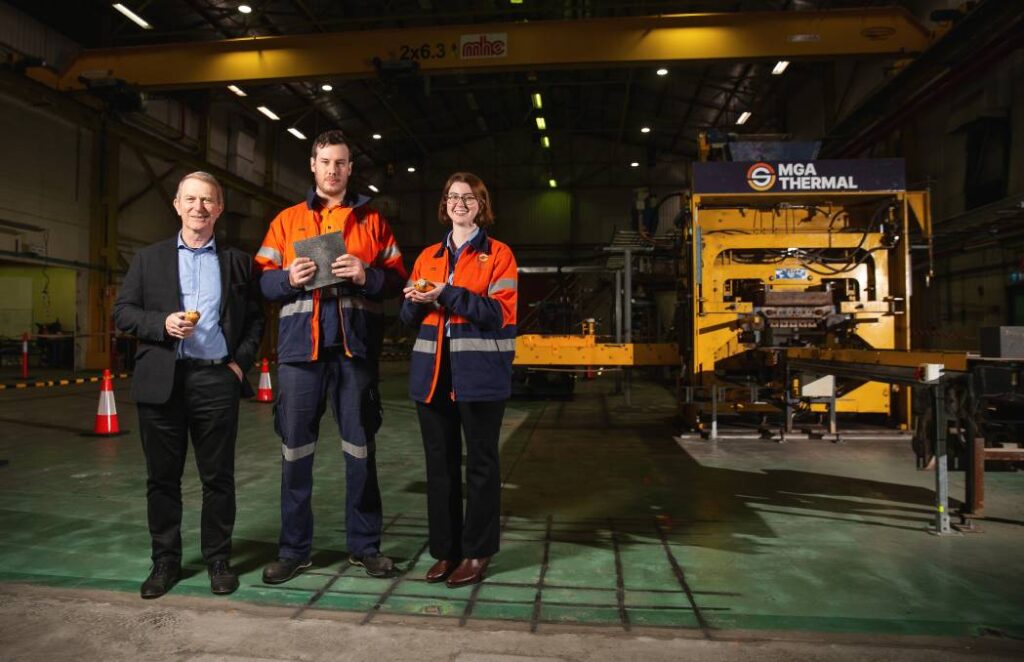
MGA Thermal is an Australian tech start-up in the thermal storage industry. MGA stands for Miscibility Gap Alloys and these are the basis for the company. MGA Thermal provides customers with an economical and efficient way of storing energy and heating. The miscibility gap alloys are what store the energy and are stacked into storage tanks. It is a renewable alternative for energy storage and is scalable.
The Australian Renewable Energy Agency (ARENA) has awarded MGA Thermal, an Australian sustainable energy firm, AUS$1.27 million (USD$900,000) to expand its thermal energy storage technology.
The grant will contribute to the installation of a 5MWh medium duration thermal energy storage pilot to show off charging and discharging capacities of up to 500kW while also generating steam from the thermal energy stored.
Specifically created (MGA) blocks from the company capture and store thermal energy from either renewable electricity or industrial waste heat.
With little energy loss, the MGA blocks can hold heat for times of hours to days. A transfer gas is used in heat exchangers to absorb heat from MGA blocks, and the heated gas or fluid can be used for industrial heating purposes or to power a steam turbine to produce electricity.
Using this energy, direct heat is produced for use in industrial settings or steam is produced to power turbines.
According to MGA Thermal, this approach can be utilised to convert thermal storage-equipped coal-fired power stations into cleaner baseload power sources, preventing the closure of these facilities in the process.
The founders of MGA Thermal are Alexander Post, Dylan Cuskelly, Erich Kisi. Its headquarters are in Newcastle, New South Wales, Australia and there are 1 to 10 employees. Since it was founded in 2019, the business has raised $6.3 million in three funding rounds.
The post Top Australian Start-Ups For Stock Traders To Watch appeared first on TheAussieway.
]]>

